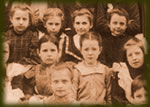 |
Getting
the Railroad on track with citizen input by Ken Eklund January 2005 |
|
|
To: From Re: CONTROLLING Dear Mayor Gonzales, Vice Mayor Chavez, and Councilmember Yeager: I write to you today as leaders both in San Jose issues and as members of the Joint Powers Board, about a situation that has never been right and currently is getting worse. I live in a residential area, on a street close to the railroad tracks between the Diridon and Tamien Stations. And more and more I see (and hear, and breathe) train operation with a significant disregard for human health and comfort. My deepest concern regards air pollution by diesel locomotives. As you know, diesel exhaust is among the worst pollution we have in this country, linked to serious health risks. You may refer to these web sites: UCS:
Life of Soot There are many others. This article details the far-reaching health impacts of off-highway diesel sources. To quote from the article: "...non-highway diesel engine pollution [is] blamed for thousands of premature deaths, heart attacks and respiratory ailments." The CBS article notes that the EPA has "already imposed tougher limits for diesel locomotive engines." The dangers of diesel exhaust are well known at the EPA. What I wish to communicate to you is: Any steps to reduce the impact of diesel pollution depend upon cooperation and faithful execution by the railroad agencies. And this is not happening. As it happens, the railroad is my neighbor, and I can tell you honestly that it is a very bad one. We have always had trains that pollute very heavily, but it is happening more and more. I am not talking about trains that cause a stink. I am talking about trains that lay a long blue cloud of exhaust thick enough to cast a shadow. In the period roughly between Thanksgiving and New Year's 2004, I collected this data:
Please do not mistake this list for an exhaustive survey. These are just incidents that I happened to be around to witness during this time period. I repeat: I am not talking about trains that "merely" cause a stink. I am talking about trains that lay a blue cloud of exhaust thick enough to cast a shadow. Each cloud can be several thousand feet long, and it drifts down among the houses and around the children playing on my street. If it is thick enough to cast a shadow, it is certainly thick enough to cause asthma, lung disease, heart disease, and other ailments. What this anecdotal data points to is a pattern I find alarming: This railroad agency regularly pollutes. From personal experience I know that it is not just this agency. Riding on a CalTrain from San Francisco to San Jose late last year, in the car close behind the locomotive, I watched a similar cloud emerge every time we pulled out of a station, and the cloud drifted down into neighborhoods in San Mateo, Redwood City, Palo Alto and so on all along the line. I have come to believe that one of the reasons that railroad agencies regularly violate the health and safety of its neighbors is that there is no effective means by which neighbors can communicate their concerns to the railroad, or to notify them when self policing is necessary. I am referring now to incidents involving industrial-level noise in my neighborhood at 2 am. Facilitated by Ken Yeager's office, I was put in touch with the railroad, and after two months of discussions with them I have learned exactly nothing about the incidents: why they occurred, what was done, why no notification, did this work conform to policy (or even what their policy is), what made it necessary to do such work at 2am in a residential neighborhood, what law made it legal, when will it happen again, etc. All these questions remain unanswered. I know now from experience what is generally accepted as truth: citizens cannot change the railroad. I am appealing to you for help. 1) For the sake of the people of San Jose and the Bay Area, you must impel immediate measures to stop severe and wanton pollution by diesel locomotives. 2) For the sake of the people of San Jose and the Bay Area, you must urge compliance to stricter EPA regulation of locomotive pollution. Let's have those locomotives comply aggressively ahead of schedule. 3) For the sake of the people of San Jose and the Bay Area, you must verify compliance to the new EPA standards. Reduced-sulfur fuel or scrubbers, for example, will not help if train engineers are free to jam on the throttle whenever they're late leaving the station. 4) For the sake of the people of San Jose and the Bay Area that live near railroad tracks, you must establish a meaningful way for them to get information and voice their concerns to railroad agencies. As a participating member of my neighborhood association, I can tell you that pollution is only the most severe of the railroad's insults; there are also complaints about noise, dust, garbage, midnight horns, non maintenenance of railroad land and structures, lack of safety fencing, and many others. 5) For the sake of the railroad, you must do all of the above. I myself am a big supporter of the railroad concept, and use commuter rail regularly. In principle, I support railroad operations and expansions such as high speed rail. But since I know that, in reality, these operations fail to deliver on their principles, I have no choice in conscience but to oppose them. Respectfully, Ken Eklund |
| Copyright 2004 | |